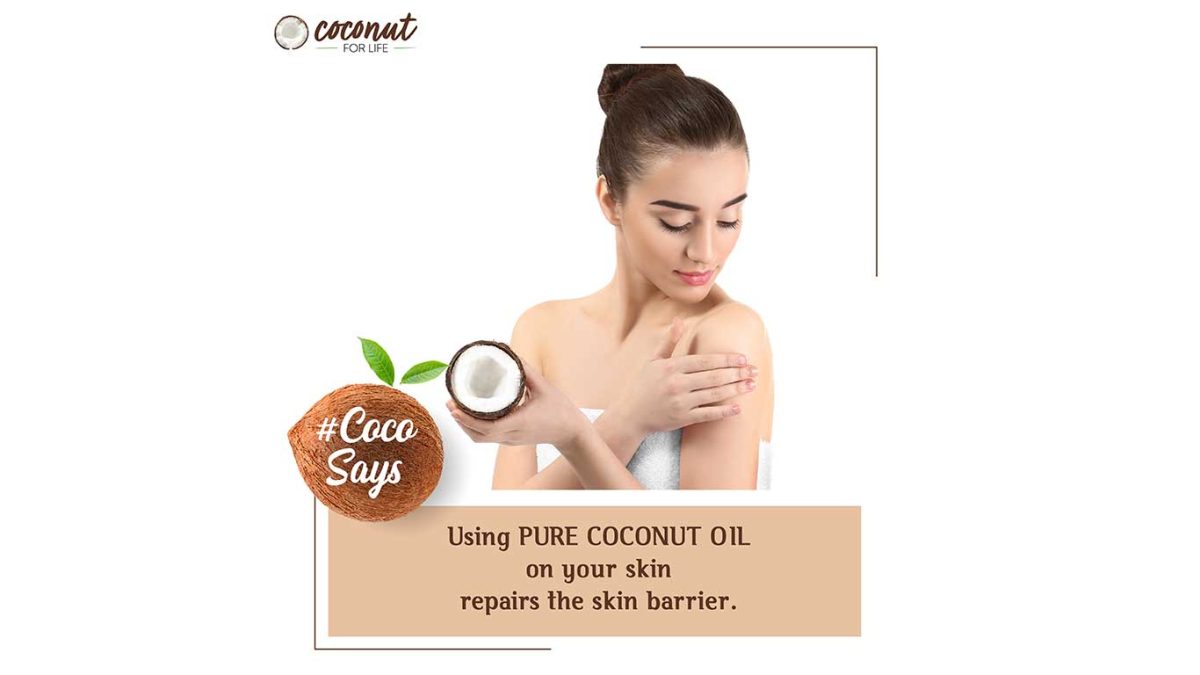
The Science Of Skin Care For All Skin Types
- There are four main skin types- Normal, combination, dry and oily.
- Normal skin is low maintenance, and coconut milk can cleanse the dirt from the pores.
- Oily skin reacts and could be maintained better with natural ingredients like coconut oil, coconut milk, castor oil, olive oil, apple cider vinegar etc.
- For dry skin, coconut oil can be used as a moisturiser and aloe vera, milk and honey, oatmeal as an exfoliator.
- A combination skin type needs to treat each part- dry and oily accordingly.
All women and men are created equal, but not all have the same skin type. Each of us has a different skin type, and each kind needs a distinct skincare routine., Non-compatible skincare might not get you the expected result, even if it’s ‘the best skincare routine’ according to beauty experts. These are the four main skin types.
Types Of Skin
Normal skin
By the term ‘normal’, we usually mean well-balanced skin. In scientific fields, it is referred to as Eudermic. For those with normal skin, their forehead, nose and chin area- also known as the T-zone and this area is oily to some extent. But the sebum production and moisture on this skin are well-balanced; the skin is neither too dry nor too oily. Normal skin becomes drier with age. Those with normal skin have quality pores, a smooth and soft skin texture, and good blood circulation. Also, normal skins usually don’t have any blemishes. This skin is not susceptible to sensitivity too.
Oily skin
Those with oily skin have excessive sebum production, which is caused by a condition called seborrhoea. There are multiple reasons that prompt sebum production- stress, genetics, hormonal imbalances, medication and beauty products that result in irritation are among the culprits behind oily skin.
Want to know if you have oily skin? Check for more prominent and visible pores and pale, thicker skin with a glossy shine. This type of skin is prone to various sorts of acne, whiteheads and blackheads.
Dry skin
Dry skin is quite contrary to oily skin. When the skin produces less sebum than usual, the skin becomes dry. Dry skin suffers from the shortage of lipids that retain essential moisture for the skin. NMF(natural moisturising factors) like lactic acid, urea and amino acids are responsible for binding water in our body. The lack of NMFs leads to dry skin.
There are mainly three dry skin forms; a little bit drier than normal, very dry and extremely dry.
Those with mildly dry skin look dull and can feel tight and brittle.
Very dry skin can feel tight. There might be mild flaking or scaling and sometimes itchiness. This type of skin is prone to irritation and infection.
Extremely dry skin is often found in the elderly and severely dehydrated body parts. It causes calluses, roughness and itchiness in particular areas like elbows, knees and feet.
Combination skin
As the name suggests, this type is a combination of dry and oily skin. The oily T-zone and enlarged pores in that area, and dry cheeks usually points to combination skin.
The overproduction of sebum causes the oily part of the skin, and the lack of essential lipids and sebum is behind the dry part of the skin.
Skincare routine for all skin types.
You need to carefully pick your skin care steps, as it will determine your skin’s liveliness, especially for the face care routine. Try to avoid chemically-equipped skincare products and follow a natural skin care routine.
Skin care routine for normal skin
People with normal skin type can start with a mild cleanser, like coconut milk. Coconut milk removes dirt and debris from your skin and unclogs your pores. Sometimes just clean water will be sufficient.
If you have normal skin, you should wash your face twice a day, and if you want, you can use coconut water as a toner.
Normal skin is already well-balanced, but in addition to that, people with normal skin can apply a thin layer of moisturiser. A dab of coconut oil should do the trick but be careful not to use too much of it. They should exfoliate their skin at least once a week.
Skin care routine for oily skin
Those with oily skin need to look for the causes behind the overproduction of sebum. Switch to a natural skin care routine and exfoliate with a natural scrub. It will fend off prevent breakouts and remove residue oil from the skin. Use the Mix of equal parts of sea salt and olive oil ( or, if you prefer, almond oil) to exfoliate.
You can use coconut milk for cleansing. You can follow the oil cleansing too. Use two-third of castor oil and one-third olive oil for this purpose. Use another cleanser for more thorough cleaning.
People with oily skin don’t need too much moisturising in their skin care routine. They can use a thin layer of coconut oil to moisturise. Apple cider vinegar is a good alternative if coconut oil feels too ‘oily’. Mix a tablespoon of apple cider vinegar in a cup of water, and store that in a refrigerator before using.
Skin care routine for dry skin
Dry skin is quite hard to maintain as it loses its moisturiser quicker than other skin types. For cleansing, use natural ingredients like avocado, oatmeal, milk, honey, aloe vera etc. These ingredients will make your dry skin softer, and ease the exfoliation process.
It is not recommended to use a toner for dry skin as it can dry out your skin even more. You can use facial steam to open up pores and to remove blackheads easily.
Include coconut oil as a moisturiser in your face care routine, as it is perfect for this skin type. It contains a high concentration of lipids and also emollient, which maintains skin hydration and moisturises aptly. Coconut milk is another exceptional hydrator for dry skin.
Skin care routine for combination skin
The trick to maintain a combination of skin is to treat each type accordingly. In the oily T-zone, use a natural cleanser and exfoliator. In the dry area, use coconut oil to moisturise.
If you are using a toner, apply it only to the oily area. A skin care routine for combination skin is easy to maintain if you remember the steps and follow them accordingly.
Some final notes
Now that you have an appropriate skin care routine, you can relax. There is a skin care routine for all skin types, and the best thing is, you can use natural ingredients to make your skin softer and healthier!
Frequently Asked Questions On Skincare
1. What should my skincare routine be?
Ans. You should follow a skin care routine that suits your skin type. Identify what is your skin type and treat your skin accordingly.
2. What is the most basic skincare routine?
Ans. An exfoliator, a cleanser and a moisturiser would be in the most are a part of a basic skin care routine.
3. How do I plan my skincare routine?
Ans. First, identify your skin type. There are four primary skin types, and each type has a different need. Plan your skin care routine only after you are sure about your skin type and include the necessary cleanser and moisturiser according to that.
4. What are the four main skin types?
Ans. Normal, dry, oily, and combination, which is the combination of dry and oily skin, are four main skin types.
Reference:
https://www.universalclass.com/articles/self-help/natural-skin-care-understanding-skin-types.htm
https://www.sustainablejungle.com/sustainable-living/natural-skin-care-ingredients/
https://www.eucerin.co.uk/about-skin/basic-skin-knowledge/skin-types
POST A COMMENT
You must be logged in to post a comment.








